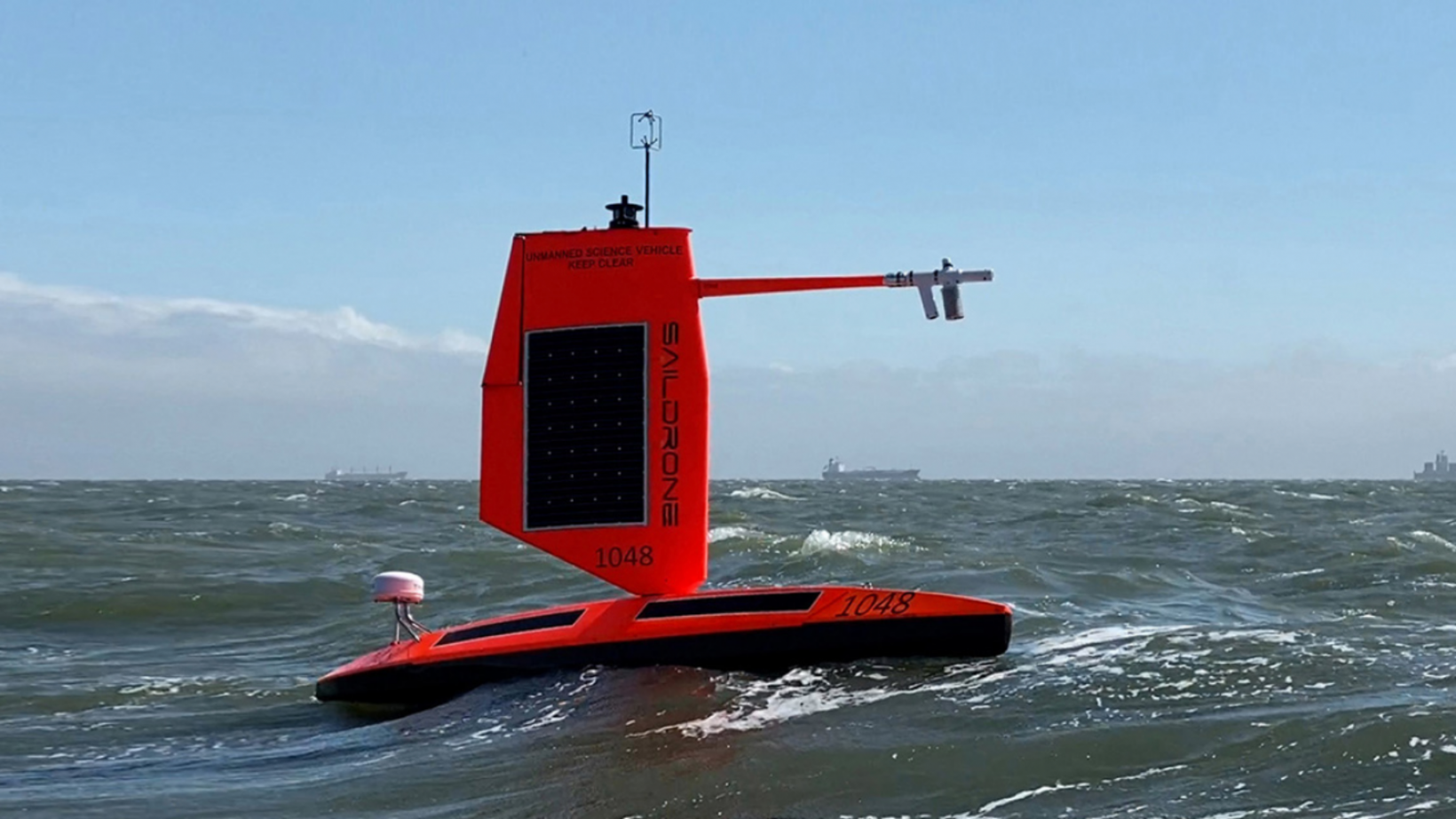The menacing interior of a massive hurricane has been filmed by an ocean drone for the first time.
Footage of the category 4 Hurricane Sam rampaging across the Atlantic Ocean was recorded by a camera onboard the uncrewed surface vehicle (USV).
The vehicle, called Saildrone Explorer SD 1045, was directed into the tropical cyclone to record conditions at the water’s surface.
The strangely soothing footage belies the ferocity of the storm. The drone braved winds of over 120 mph and waves of 50 feet to capture data about Sam.
You can watch the wild weather it witnessed by clicking on the image atop this article. You can also watch a split-screen showing POV footage from the drone alongside the location of the vehicle in the video below.
The drone’s daring voyage was the latest leg of a mission to unearth new insights about hurricanes.
A total of five USVs have been deployed to the Atlantic Ocean this summer to collect in situ observations during storms. The data will be used by the National Oceanic and Atmospheric Administration (NOAA) to improve storm forecasting.

The autonomous vehicles are equipped with ruggedized “hurricane wings” that enable them to operate in winds over 70 mph and waves above 10 feet.
This design allows them to collect information immediately before and during a hurricane.
Dr Jun Zhang, an NOAA scientist, said this data will help predict the rapid intensification of hurricanes:
The biggest gap in our understanding of hurricanes are the processes by which they intensify so quickly, as well as the ability to accurately predict how strong they will become. We know that the exchange of heat between the ocean and the atmosphere is one of the key physical processes providing energy to a storm, but to improve understanding, we need to collect in situ observations during a storm.
That’s not an easy job for your average human sailor, but it’s a task that’s well-suited to drones. It’s certainly a more laudable use case than surveilling citizens, grounding flights, or ruining the wilderness.
Get the TNW newsletter
Get the most important tech news in your inbox each week.





